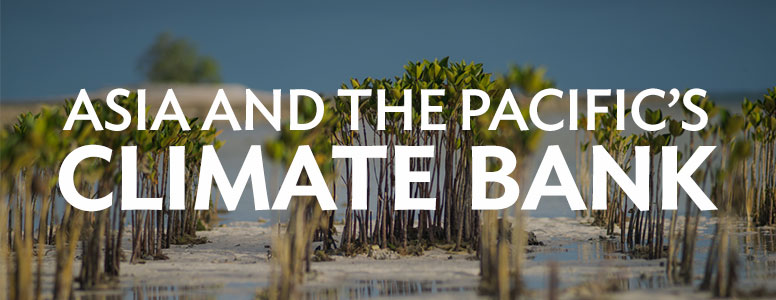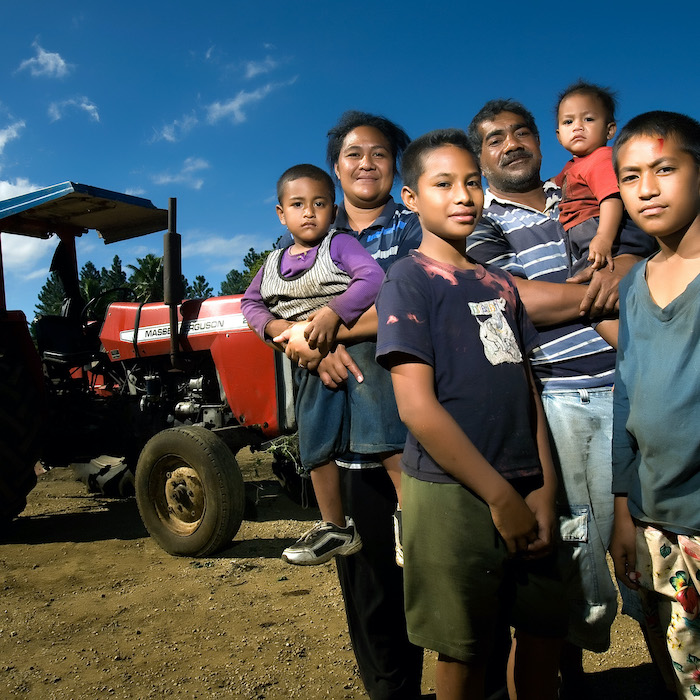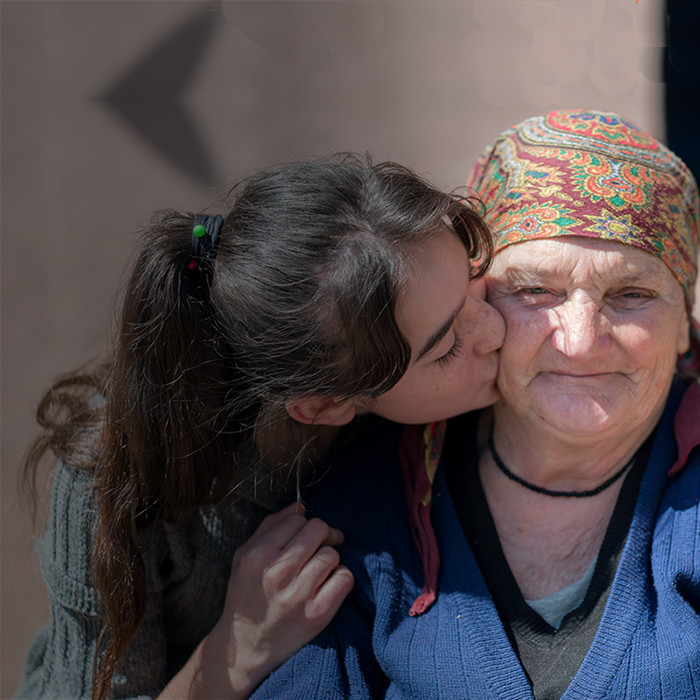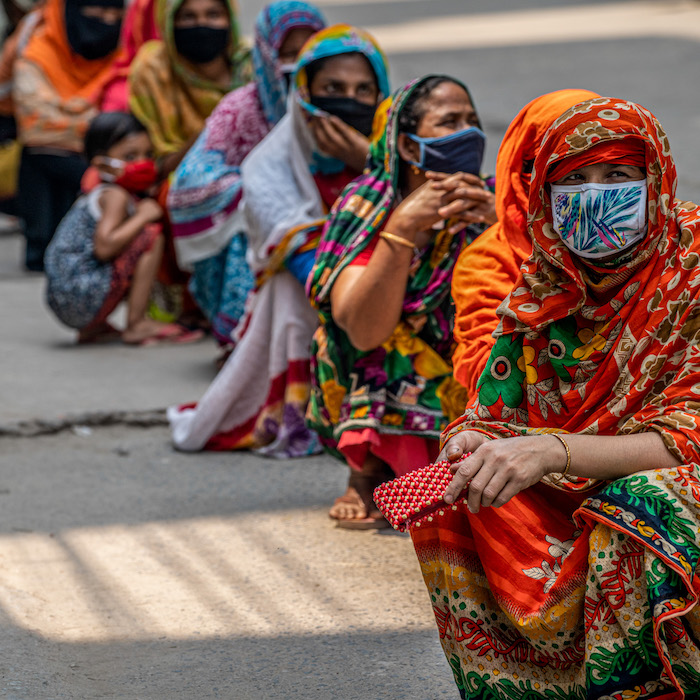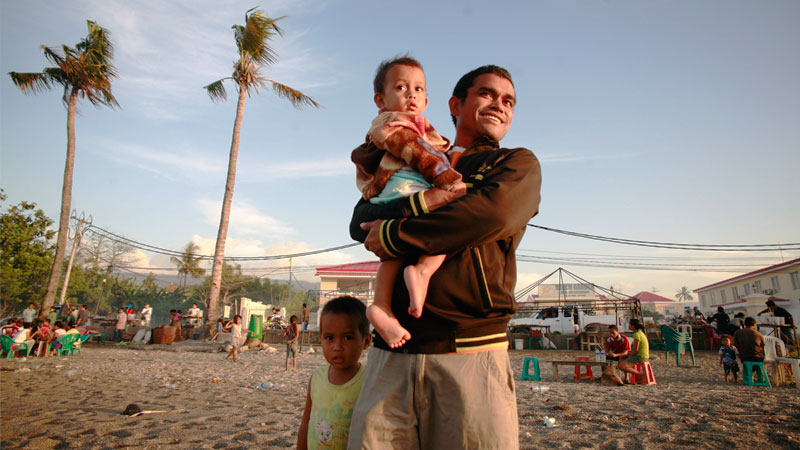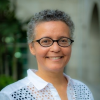Social Development and Poverty
ADB’s central mission is working to reduce poverty in Asia and the Pacific and to ensure the benefits of economic growth and social development are equitably spread.
- Jump to:
- What ADB Is Doing
- What ADB Has Done
- What's New
-
Population living on less than $1.90 a day in developing Asia
In 2017, 203 million people lived on less than $.190 a day in developing Asia.
-
Population aged 60 and older,
2015 and 2050By 2050, the number of care-dependent older people is forecast to quadruple.
-
Number of extremely poor
in developing Asia
(in millions)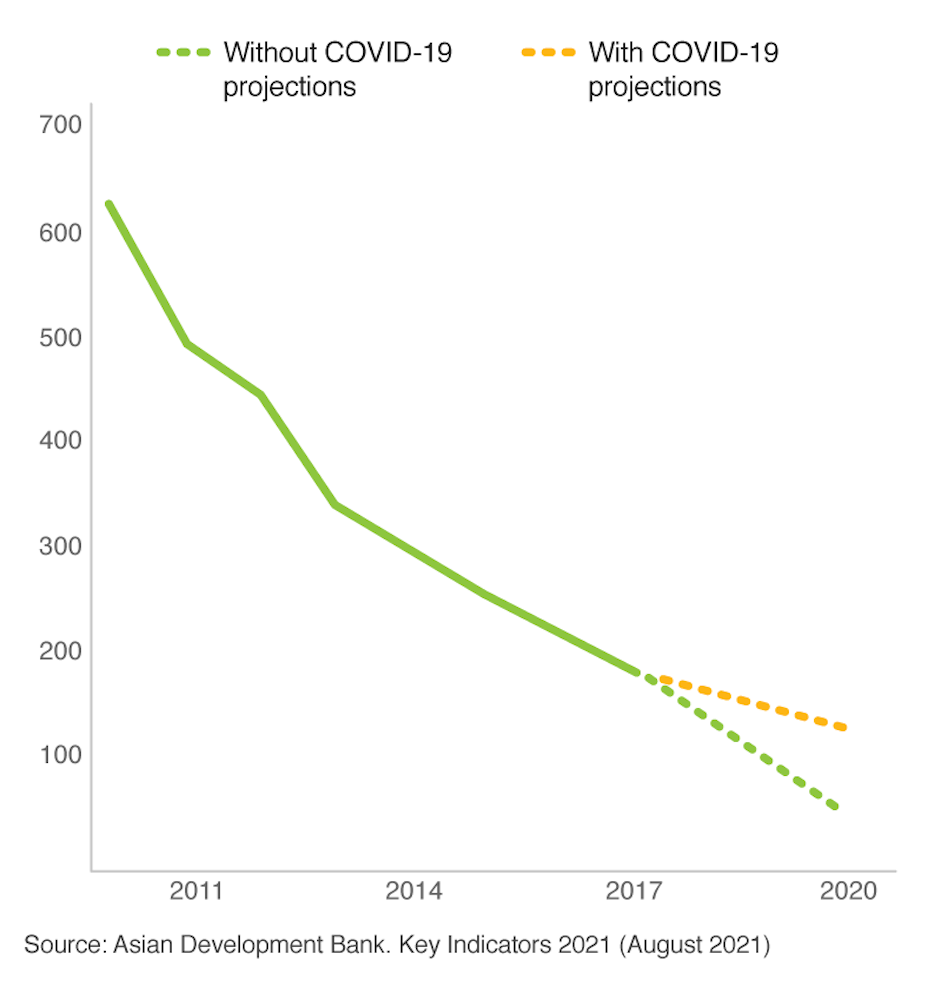
Large numbers of people are constantly at risk of falling back into extreme poverty during economic downturns and shocks such as the COVID-19 pandemic.
Poverty reduction is central to ADB’s work and is the focus of Strategy 2030's first operational priority. ADB’s focus on inclusion to ensure the benefits of growth are extended to all, has contributed to regional poverty reduction for more than half a century. ADB’s program for social protection support aims to reduce poverty and vulnerability by promoting efficient labor markets, diminishing risk, and protecting against loss of income. Through its growing health and social protection portfolio, ADB pays particular attention to the long-term care and health of the region’s rapidly aging population.
Our Impact
Results delivered in 2022 from ADB projects.
4.4 million
Poor and vulnerable people with improved standards of living
263.2 million
People benefitting from improved health/education services, or social protection
9.9 million
Jobs generated
Your Questions Answered
-
Why does ADB have specific social development strategies, surely as the region grows wealthier social indicators improve in tandem?
While the tide of economic growth is generally expected to lift all boats, in real life it often leaves behind people who are poor and vulnerable. Hence, there is a need for social development strategies that specifically target economic and social integration of disadvantaged groups.
-
What are the three most cost-effective ways of reducing severe poverty?
The three most cost-effective ways of reducing severe poverty are investments in human capital (health and education), skills and life-long learning, and social protection. This includes social assistance programs specifically targeting extreme poor and vulnerable.
-
The region is rapidly aging. How should social protection measures adapt to deal with this reality?
Population aging is closely correlated to social and economic development, so increased longevity is to be celebrated. But the rapid increase in the numbers of older people in Asia and the Pacific means health and care systems need to adapt.
What's New
-
| Asian Development Blog
Rough Sailing: Navigating Labor Shortages and Remittance Needs in the Pacific
-
| Video
Community-driven Solutions: Success Stories in COVID-19 Response
-
| Development Asia
Kazakhstan's Path to Law Enforcement Integrity
-
| Video
Building Resilient Communities: COVID-19 Stories of Grassroots Impact
-
| Publications, Guides
Gender Equality and Social Inclusion in South Asia: An Assessment for Action

